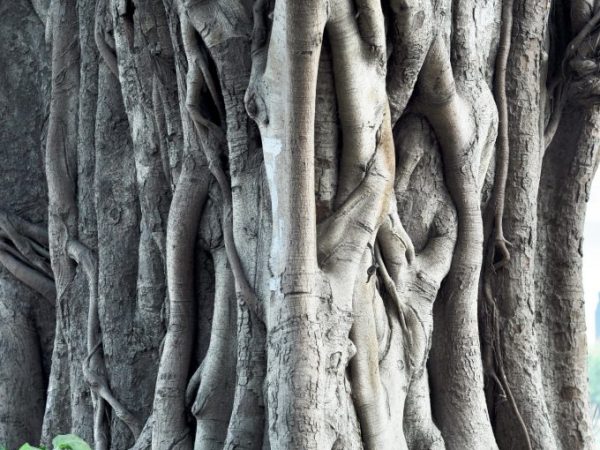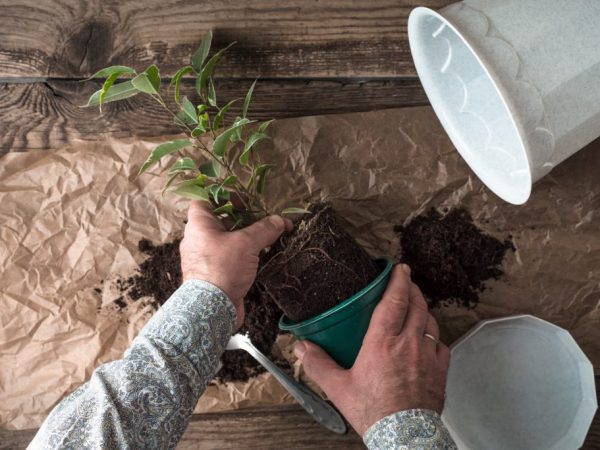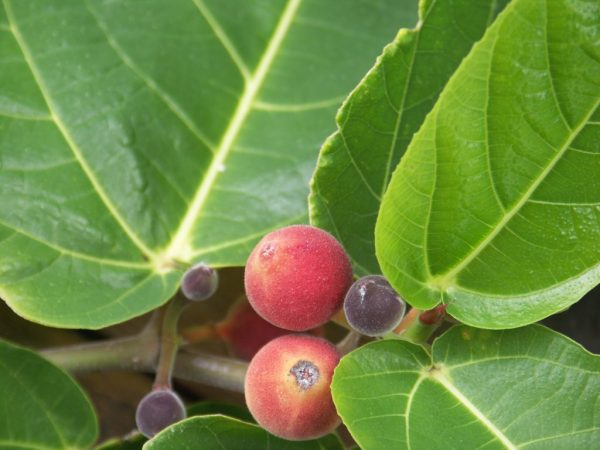How to care for Bengal ficus
"Ficus benghalensis" - this is how the name "ficus Bengal" sounds in Latin. This tree is a prominent representative of one of the largest families - mulberry. It grows in the monsoon forests of Sri Lanka, Bangladesh and Burma, China, Malaysia and India. The uniqueness of the plant is that in the wild it becomes very large, as it grows not one by one, but in small clusters, which over time create a fairly large and dense forest.

How to care for Bengal ficus
This life form of Bengal ficus is called "banyan tree".
If a florist wants to replenish his collection of plants with just such a tree, he just needs to go to the store and call the name "Andrey" - this is another name for the plant.
Main characteristics
- Ficus Bengal is a banyan variety that grows from seeds. This tree differs from the others in its parameters: its height is 35-40 m.The foliage circumference can be more than 600 m.
- One leaf is 20-25 cm long. They have a slightly elongated oval shape. On the back (leathery) side of the surface, veins of a light green hue are quite clearly visible.
- The size of the fruits of the Bengal ficus does not correspond to the general characteristic: they are small.
- The fact that Bengal ficus can form a banyan tree is its feature, which is obtained exclusively due to the biological properties characteristic of the tree. Airy and fairly thick roots begin to form on horizontal branches. Over time, some of them disappear, others, on the contrary, develop, sink to the ground, where they quickly take root, after which transformation begins, and these roots become similar to other trunks. As a result, the rooting process does not end, but is constantly repeated, creating new trees. This plant can grow to incredible areas in a minimal amount of time in the wild. Caring for Bengal ficus at home is somewhat different. Since the main goal of a florist is to grow a beautiful plant.
- The tree grows extremely intensively. If you provide normal care, on average for 1 year it can add 45-100 cm in height. In order to restrain the intensity of growth, it is necessary to cultivate or prune the root system in time.
Maintenance and care
The decision to buy and grow Bengal ficus (ficus benghalensis) at home is made by a small number of people. Since this plant has special characteristics, it needs a large open space, so those who live in small apartments are unlikely to buy it.
In order for home care to be carried out efficiently, you need to know the basic nuances of growing: how to properly plant, grow, feed, irrigate and replant a tree.
Microclimate
Ficus Bengal is undemanding in terms of lighting. It develops normally under artificial light, the main thing is that there is a sufficient amount of space.
Correct and even development of the crown can be obtained only if the flower pot is alternately rotated towards the sun around its axis. This will give the plant and leaves an even amount of light.

The tree loves a lot of space
Another important point regarding the care of Bengal ficus is the ambient temperature. The permissible minimum is 18-19 ° С, the maximum is 25-26 ° С. Professionals strongly recommend protecting the tree from strong temperature fluctuations and drafts: they can adversely affect the condition of the plant.
Ficus Bengal is a large plant, so there are small nuances regarding the humidity in the room where it is located. If you have a battery or other devices for heating the room, you should take care of additional irrigation: these devices make the air very dry. From time to time, you should pass a damp sponge over the foliage to remove the collected dust particles.
Priming
There are some nuances regarding the soil characteristics. Bengal ficus will do well in neutral soil. It may include:
- peat;
- sand;
- Earth.
Also, the substrate should have a low acidity level. If the indicator exceeds the norm, the ficus will not develop and multiply, and over time it will dry out altogether. To be sure of the soil, you can buy it in the store. There must be a drainage layer at the bottom of the pot.
Top dressing and irrigation
It is necessary to water the ficus regularly and abundantly, because this type of plant does not have a dormant phase. Top dressing is done as carefully as possible so as not to harm the plant. Professionals say that fertilizer can be applied using ready-made complexes. This is recommended to be done every 2 weeks.
Reproduction of Bengal ficus is done in two ways. The first is by seeds. The second is by cuttings (vegetative propagation), during which the tops of the branches are cut off, on which there are several internodes. Then they are transplanted into a special mixture consisting of peat and sand. Ficus can be left in water, but in such an environment, cuttings take root much more slowly.
Home transplant

You need to transplant the plant regularly.
Young plants need to be transplanted annually. If the ficus is more than 5 years old, the procedure can be performed every few years. Each subsequent transplant involves a change in capacity. The pot should be a few centimeters larger in height and width than the previous one. In order not to make a mistake when choosing, you can turn to a professional florist-consultant for help: he will help you make a choice.
If the tree is already large, it makes sense to replace the top ball of soil. During transshipment, the growth rate can be adjusted by performing a small root pruning. Another option for solving this problem is not to transplant the ficus, but to leave it in a cramped pot.
Pruning a bush
This procedure should be carried out in a warm season. There are two types of trimming:
- Forming, after which the tree takes on a more well-groomed appearance.
- Sanitary, which involves the removal of dried and weak shoots.
Diseases
Ficus is a plant that rarely succumbs to disease. There are situations when parasitic insects appear on it: ticks, scale insects, thrips. If the plant is small, the problem is solved very simply: a stream of warm water is directed to the pests, after they fall off, they are removed. If the tree is large and has a dense massive crown, it is additionally treated with specialized means - insecticides.
A plant is sick only when a person violates the basic rules of care:
- If the temperature drops significantly, the lower leaves begin to fade.
- If the soil is heavily flooded with water, yellowish spots will appear on the leaves.
- If the plant needs additional fertilization, this will be signaled by a slower growth rate and a loss of leaf color saturation.
- If there is improper lighting in the room or the ficus is in the shade, the stems are strongly stretched, and the leaves lose their shape and length.
- If it's too hot or the florist has applied too much fertilizer, small brown specks appear on the edge.
Bonsai shape
The banyan tree shape is characteristic of ficuses grown in the wild. If you buy a plant and grow it at home, such a form is impossible, because it requires special conditions and sufficient space. Florists can choose the bonsai shape for trimming: it will look no worse, and if you choose the right place and compose a composition with some small decorative flowers, bonsai bushes will effectively complement the overall picture. Such a flower can be grown even in a small room or you can purchase a special stand for the windowsill.
Ficus Bengalsky is a wonderful gift even for a novice florist. He is able to become a wonderful decoration for any room.


